Introduction to Petting Farms
Petting farms make it possible for different generations and different people to have a good interaction with animals as well as the surrounding environment. These are becoming attractive to many people since they intend to offer a touch or even interaction with some of the animals they are supposed to rear most of which make them ideal for families, schools, and or people who need a break from their usually busy schedules. Petting farms: a concept that has metamorphosed into something of so much value today and this guide will give whoever reads it a glimpse of what it provides, why the concept is deemed to be so important, and what one is likely to find when he or she gets to the places.
What is a Petting Farm?
Petting farm and petting zoo are terms opposite to a wild animal zoo since it involve domesticated farm animals who are friendly with people. Different from other facilities like lions, and crocodiles that are in endangered lists, petting farms allow direct contact with animals like sheep, goats, rabbits, chicks, pigs, and ponies, and at times alpacas, and llamas.
Purpose of Petting Farms
These are just production farms that wanted to provide entertainment and teach the people to be able to touch, feed animals and many more without the fear.
Importance for Children
Play neighbourhood centres like the petting farm is especially important to the kids, as the kids get real life experience by touching and even petting the animals hence improving their humane handling.
General Distinctions between Petting Farms and Zoos
- Animal Types: Petting farms only have farm animals and domesticated animals; some zoos have some wild animals like carnivores.
- Interaction: In petting farms, people are able to fondle the animals unlike in the case of the zoo where the people can only observe the animals.
- Safety: Petting farms are most safe, and people especially children can touch the animals on the farms for they are unlikely to fall sick or get attacked by the animals.

Why Petting Farms Are Becoming More Popular
1. Animal Appreciation and Empathy
Petting farms mainly create a possibility to interact with animals without stressing them, which activates the appreciation of animals. This interaction helps the children and the adults in shaping their attitudes and perceptions of animals hence choosing to be responsible for animals.
2. Educational Opportunities
Some petting farms make social recreation nurseries fun while at the same time also educating the young on matters concerning farming, animals, and agriculture. As accredited tourist can acquire knowledge on where their food is prepared from and the humane ways in addressing farming.
3. Family-Friendly Entertainment
One of the interesting activities that families engage in is petting farms where they get to feed touch and even play with animals. This aspect alone makes the interactions memorable and provide quality family time in what can be regarded as their natural environment.
4. Connection with Nature
Petting farms take people away from the typical concrete jungle environment by providing a rural environment. This can help alleviate stress, raise public awareness on the environment as well as support one’s mental health.
5. Economic Impact
Petting farms are useful as they help generate revenues since they act as a source of tourist’ attraction. They are sources of income for farmers and other business entities in the local communities such as through fees charged for admission, food and souvenir stands.
Petting Farms around the Globe
Here are some popular petting farms:
India
- Japalouppe Equestrian Centre
This center is found in Talegaon City, India which is closely related to tourism and educational tourism specifically because it avails a platform to interact with different types of farm animals.
Malta
- Ta’ Qali Petting Farm
It is located at the southern end of Ta’ Qali Park; one of the farms has a wide selection of animals pythons, giant cat cubs, and many others for animal lovers.
New Zealand
- Glenlothian Petting Farm
This is a well-known farm located in West Melton, HGI, and is home to Bennett’s Wallabies, Enderby Island Rabbits, and Arapawa Island Sheep, all of which for animal interactions.
United Kingdom
- Rare Breed Centre Petting Farm is from New South Wales, Australia.
This farm is in Kent and measures 100 acres; it hosts rare farm animals and those that belong to the heritage breeds. Even today it is a famous tourists spot and an informative center as well.
United States
- Green Meadows Petting Farm (Maryland)
- Maymont Petting Farm (Virginia)
- Animal Farm Petting Zoo (New York)
- Verdant Petting Farm (Pennsylvania)
Such farms are becoming more and more widespread all over the United States of America, where people can get a broad spectrum of practices with animals and receive a great deal of information.

The Importance of Petting Farms
1. Promoting Agriculture
Petting farms offer the populace information on agriculture and farming. Both stress people’s focus on meal producers and the significance of sustainable agriculture.
2. Interactive Experience
Petting farms provide positive, usually enforced, contact with animals, where the guests are allowed to pet, feed, and groom the animals. This interaction is important for the improvement of the standards of animal care and patient handling of pets among different people.
3. Emotional Connection
Petting farm animals can help people find comfort and establish social relations to improve their well-being. The interactions can be therapeutic depending on the child or the caller in general and the kind of company they seek.
4. Shelter for Abandoned Animals
Some of these centers also act as a temporary home to animals which are either given up by their owners or rescued from sawmill and other related places. These farms usually participate in acts of rehabilitation as well as adoption of the animals.
5. Adoption Programs
A good proportion of petting farms collaborate with animal shelters to find new homes for the animals. In this way, visitors get to know animals that are in the adoption list, hence will be willing to take part in offering the needed care for the pets.
6. Volunteering Opportunities
Some petting farms extend volunteering for students and other people in the community, and the volunteers get valuable experience in managing animals and being of socially responsible in helping the farm in taking care of the animals.
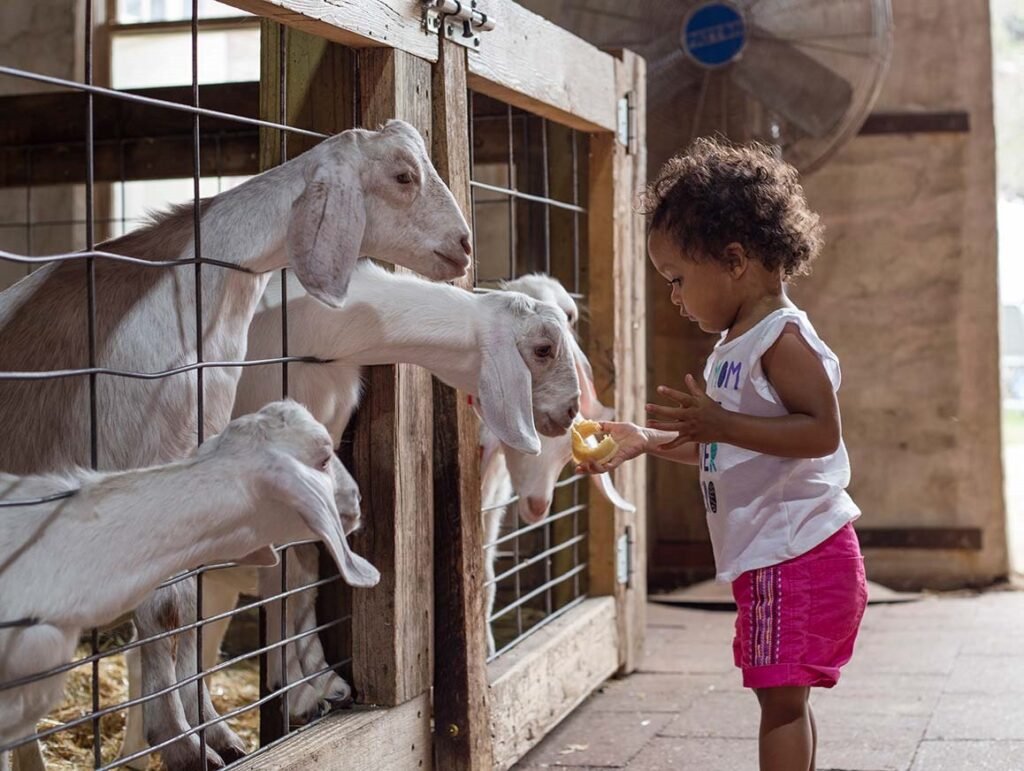
Here is why Petting Farms is a better option than visiting Zoos.
1. Less Stress for Animals
Animals in the petting farms are less stressed as they have been conditioned to adapt to humans as their companions. While traditional animals keep for entertainment such as zoos its benefits are lower since animals may be stressed from caging and being watched most of the time, the petting farms are more comfortable.
2. Natural Environment
Petting farms are structures that help build natural homes to animals especially those who are used to interacting with people. This way of organization and location enables animals to live in proper and relaxed surroundings.
3. Rescue and Rehabilitation
Most of the petting farms are related to providing animals with a second chance and helping them get out of physical and emotional abuse or neglect. They offer shelter to these animals and enable them get a much better chance at leading a healthier life.
4. Affordability
Petting farms are less expensive compared to a zoo and would therefore attract many families and groups. That makes the experience more accessible to a greater number of people without sacrificing much on the expenses.
5. Diverse Breeds Holding farms are focused on the numerous types of animal breeds that are sometimes known to be rare and even endangered. This diversity offers learning to the community and also plays the role of genetically safeguarding animals that are rare in nature.
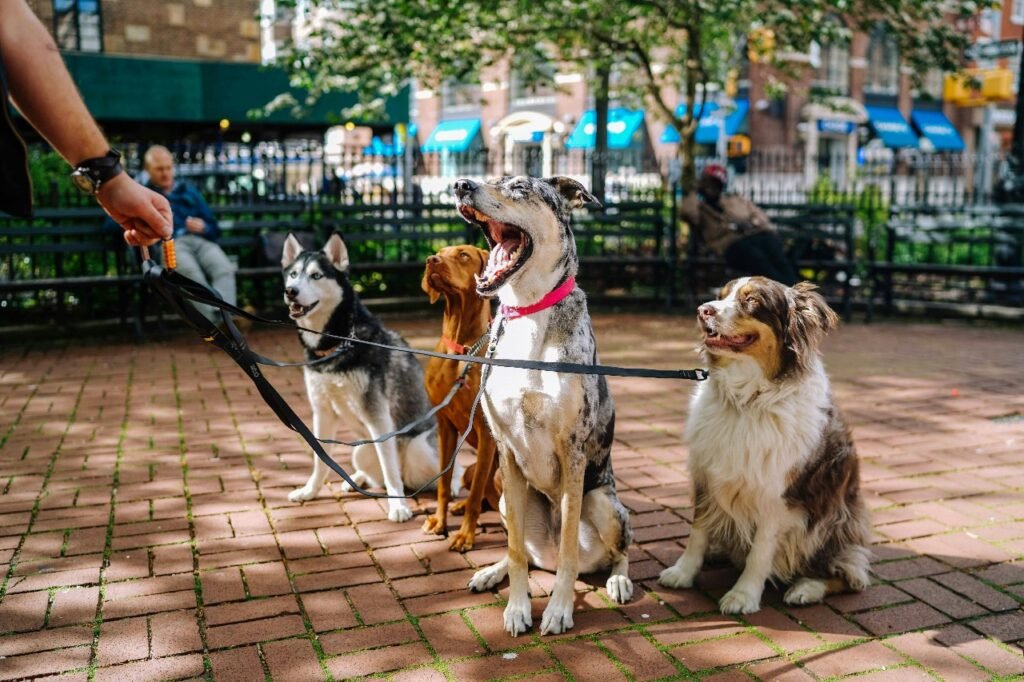
Bringing Your Pet to a Petting Farm
Petting farms are often petting zoos that are focused on the kinds of animals that are usually found on a farm than the regular pets that are found at homes such as dogs or cats among others. Here are some reasons why household pets are typically not allowed in petting farms: Below are some of the reasons as to why it is prohibited for household pets to be taken to petting farms:
1. Behavior and Socialization
The breeds of the farm animal that are incorporated in petting farms are so chosen that they are friendly with people. Other animals in the households may not be accustomed to such an environment and therefore poses a risk or harm.
2. Safety and Health Concerns
While shading the plans of the household pets with farm animals the small animals may be attacked or bitten hence making the whole process very dangerous. Various points of operations that are implemented in the petting farms have been put in place due to the health measures that need to be taken on both the animals and the people who want to interact with these animals.
3. Purpose and Focus
The primary functions of petting farms are edutainment and recreational and include domesticated livestock. This factor can cause concern because constant attention is paid to it and the conditions for household pets do not match those for monkeys.
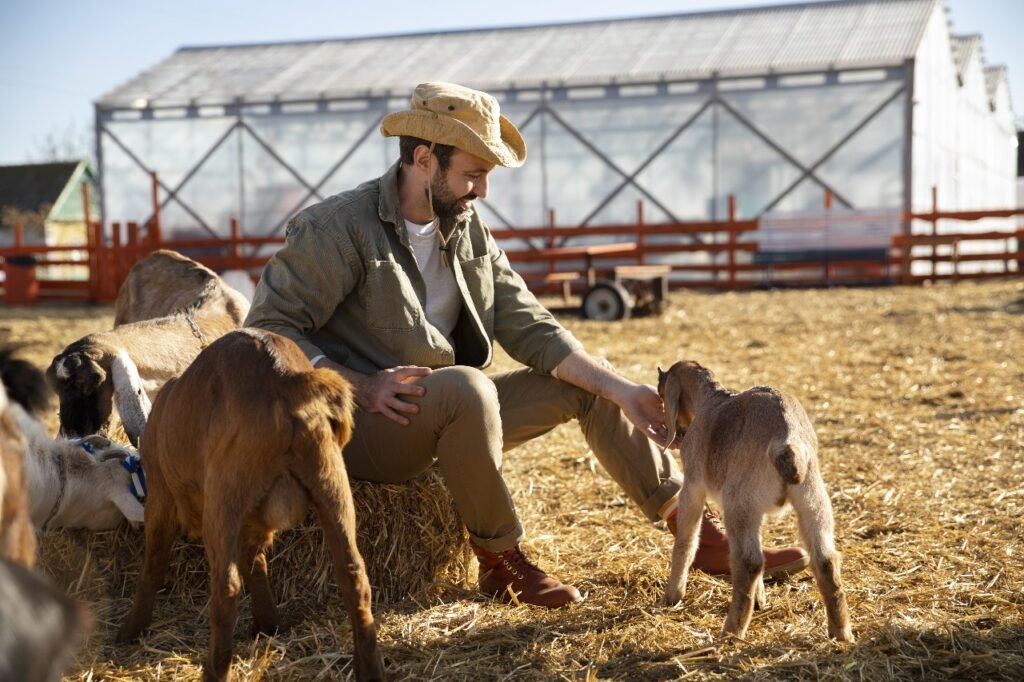
Key Features of Petting Farms
1. Animals and Nutrition
Petting farms refer to business places such as centers where people particularly children are allowed to touch animals like sheep, goats, pigs, rabbits and the likes. Tourists may also get details with regard to diet of the animals and even feed the animals using the available food.
2. Interactive Engagement
The main object of purpose of petting farms was understood in the relation of touching and touch experience of animals. This engagement increases the awareness on the farm animals together with how the farms are being operated.
3. Events and Activities
Birthday parties, classes, and other festivity events such as Easter are some events that are offered conveniently at petting farms. Some of them may be more complex and may include, perhaps pony rides, riding on the tractor which are some of the activities that will be involving the theme of a farm.
4. Picnic Areas and Playgrounds
Concerning play areas the corporate petting farms created the picnic areas and play grounds in order to meet the need of taking meals by families. They enhance the quality of visitors’ stay among the areas, as would other infrastructural facilities.
5. Retail and Food Sales
Petting farms also engage themselves in the exercises of fresh farm product sales, eggs, and other imprinted products. Otherwise, guests can also eat fast foods or drinks at the food stands within the Centre or new restaurants which an investor wishes to open.
6. Animal Feeding
During the encounter, one can purchase the feed or they can as well bring along the feed they intend to feed the animals with. It will be rather remiss not to point out that this is probably one of the most enjoyable and informative activities that the young and the old can participate in.
7. Health and Safety
Personal hygiene and cleaning process of the facilities are normally maintained and observed well in the petting farms to avoid spreading of diseases. Before and after touching animals, people are encouraged to wash their hands with water and soap in order to decrease the rates of disease.
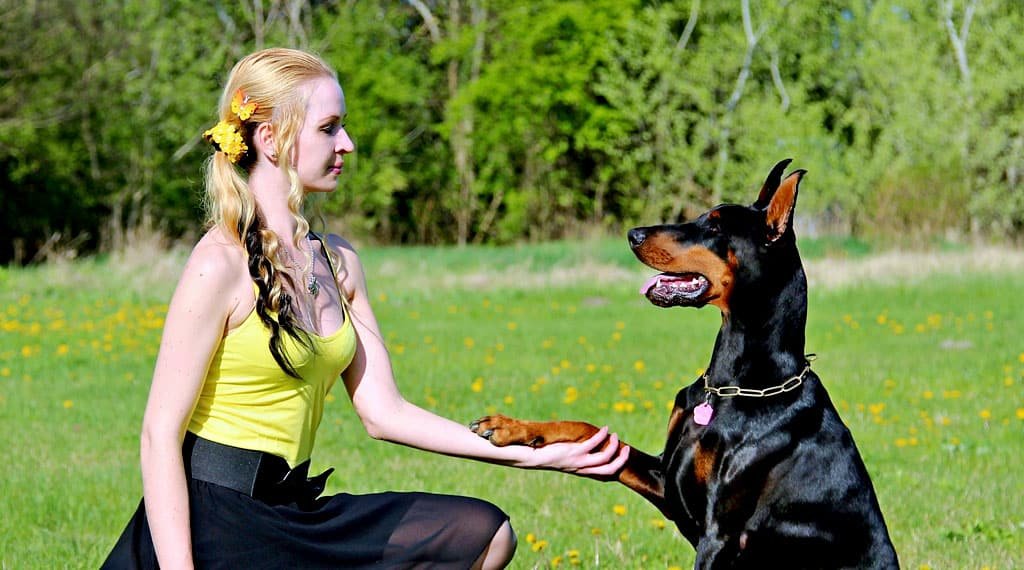
Unique Animals Found at Petting Farms
pets is an area where other than the regular cattle and other large farm animals people can also bring their animals for shelter. Here are some uncommon animals you might encounter:Here are the lists of some of the rare animals that people can encounter:
1. Alpacas and Llamas
Cute and tiny animals, alpaca and llamas, draw the visitors in because of the usage in petting farm. They are friendly and they are curious that is why guests like to pose with them.
2. Miniature Horses
According to the type, Bantam-type horses are calm, and it is suggested that they be bred for children or touch the animal farm. They are sociable people and love to interact with people most especially the kids.
3. Emus and Ostriches
These are fairly big birds that cannot fly, but the spectator could have fun watching these birds and at times you can even touch them especially if they are raised in farms meant for animals of such nature. Thus, by absorbing their help, it is possible to become an individualistic client attraction center for tourists interested in sightseeing.
4. Miniature Goats
In fact pygmy or miniature goats are friendly and playful animals which is why people like them the most. These goats are actually relatively slighter than the normal goats; thus it can probably be better for the children to handle.
5. Exotic Poultry
Petting farms also can consist of such exotic poultry as peafowls, guineafowls, or fancy poultry of various and striking colors. These birds enhance the looks of the farm not only do they give people something to feast their eyes on with much interest.
6. Wallabies or Kangaroos
To the wallabies and kangaroos, these might be possibly the native animals that could be taken, bred in petting farm to allow the people to view the animals and at times to have the feeling of touching the animals.
7. Miniature Pigs
Teacup pigs do have hair and are small-sized pigs and are affectionate animals or pets and also clever animals. This is why they are favorite animals in places such as the petting farms; they are friendly animals.
8. Bunnies and Exotic Rabbits
That may be present in a petting farm are strangers like the Angora which is well known for its quality fur.
9. Farmyard Birds
Normal farm animals that petting farm may include are the chickens, ducks, roosters, etc but there may also be peacocks, turkeys, and even geese; these animals can’t be said to be the same in terms of their behavior and even looks.
10. Tortoises or Turtles
Among the small animals that one can look at more closely, have fun with and/or physically interact with in the petting farms include; reptiles, especially the tortoises.
Ticket Prices at Petting Farms
All the petting firms are relatively inexpensive to automate; thus, the firms target families or a group of clientele. With this regard, there are labour charges which vary with the region of the farm, size of the farm and activities that could be undertook. Here’s a general overview of ticket prices: Here a broad example of the ticket price would be:
Average Ticket Price:
- Children (Ages 2-12): $5 -$10.
- Adults (Ages 13+): $10 – $15
- Seniors (Ages 60+): $5 – $12.
- Family Passes: $25 – $40.
- Season Passes: $50-100.
Factors Affecting Ticket Prices:
- Location: Those farms that are sited in the urban area or the areas that attract a lot of tourists may be charging relatively higher as compared to the countryside fields.
- Size & Scale: In conclusion it can be noted that the ticket prices might be more for the big farms that include large numbers of animals and other facilities.
- Activities & Amenities: Others that offer other related services like pony rides and other educating tours may be relatively expensive.
- Special Events: This price can also vary depending on whether is a holiday, a sporting event or any other event which would attract a number of people.
- Non-Profit vs. Commercial: Typically, cheaper and outright asking for a monetary contribution: This assumption is applicable to conservative non-profit farms.
Rarest Petting Farms and Unique Animal Sanctuaries
However, most of the petting farms are set to house tamed animals but there are some that are genetically bred to house exotic endanged species of pets. Here are a few notable petting farms and sanctuaries: Below are some of the petting farms and sanctuaries;
1. Shire Hall Farm
Location: South Yorkshire, England
Notable Animals: Exotic breeds of; sheep, pigs, goats and poultry were mostly for breeding purposes only.
2. Rare Breeds Centre
Location: Kent, England
Notable Animals: Specialized in matters related to exotic and threatened farm animal species and breeds.
3. Cotswold Farm Park
Location: Gloucestershire, England
Notable Animals: Established by Adam Henson this farm has a vision of breeding farm animals that are on the brink of extinction.
4. Collingwood Children’s Farm
Location: Melbourne, Australia
Notable Animals: Yes it has educational programs and it has animals that you would not find in most farms.
5. Leviathan Wildlife Sanctuary
Location: South Africa
Notable Animals: Emphasizes the aspects of protection and education concerning various kinds of the wildlife.
6. Heritage Farm
Location: New York, USA
Notable Animals: Recalls that it is necessary to preserve endangered animal breeds and also to share some information with people.
7. Farm Sanctuary
Location: Multiple locations in the USA.
Notable Animals: Rescues and rehabilitates farm animals, promoting animal rights awareness.
Conclusion
Benefits of Petting Farms
Taking this into consideration, many people and families get involved with animals and thus with nature. For those who like to have and spend time with animals, petting farms are probably useful. First, schools give education options, second, contribute to cultural diversity, and last but not least, help the economy of the area.
Planning Your Visit
From a one-day trip to a local farm or an international trip, famous petting farms are always enjoyable.
FAQ’s
What is a petting farm?
A petting farm therefore can be defined as a place or area where people can touch animals in a farm-like environment and these animals are tamed. They are different inasmuch as this one features animals that one can touch and even pet such as sheep, goats, and rabbits.
The types of animals that are typically found in a petting farm include?
Some of the animals that one can commonly get to see in petting farms are goats, sheep, rabbits, chickens, Pigs, ponies, and alpacas or llamas. Other farms have also brought other exotic animals such as emus, ostrich, or miniature horses.
Is it safe for children to be around petting farms?
Yes, they are safe for children as they are primarily described as petting farms. It is with animals; they enable restricted touching of the animals and keep checking whether they are observing health and safety standards at all times hence a safe environment for all people.
How much does it cost to visit a petting farm?
The cost of tickets to petting farms varies, it may cost as little as $ 5 to $ 15 for a single person with slight variation when bought in large groups, and family tickets may go for as low as $ 25 to $ 40. Therefore, the price can be slightly varied depending on one region to another, the size of the farm, and the available activity within the farm.
In what cases is it permitted to take a pet to a petting farm?
Regarding the constraints, most of the petting farms do not allow customers to bring their pets, for instance, dogs or cats because the main animals include farm animals. This policy could be relative to each farm and therefore, it is wise to speak concerning the aspect of pets before approaching a certain farm.
What do I need to carry to the petting farm?
Appropriate footwear for the outfit should also be worn together with the kind of clothing that is comfortable. Besides, the first aid kit, other accessories that should be carried include hand sanitizers, sun-blocking cream or lotion, and a camera for taking photographs.

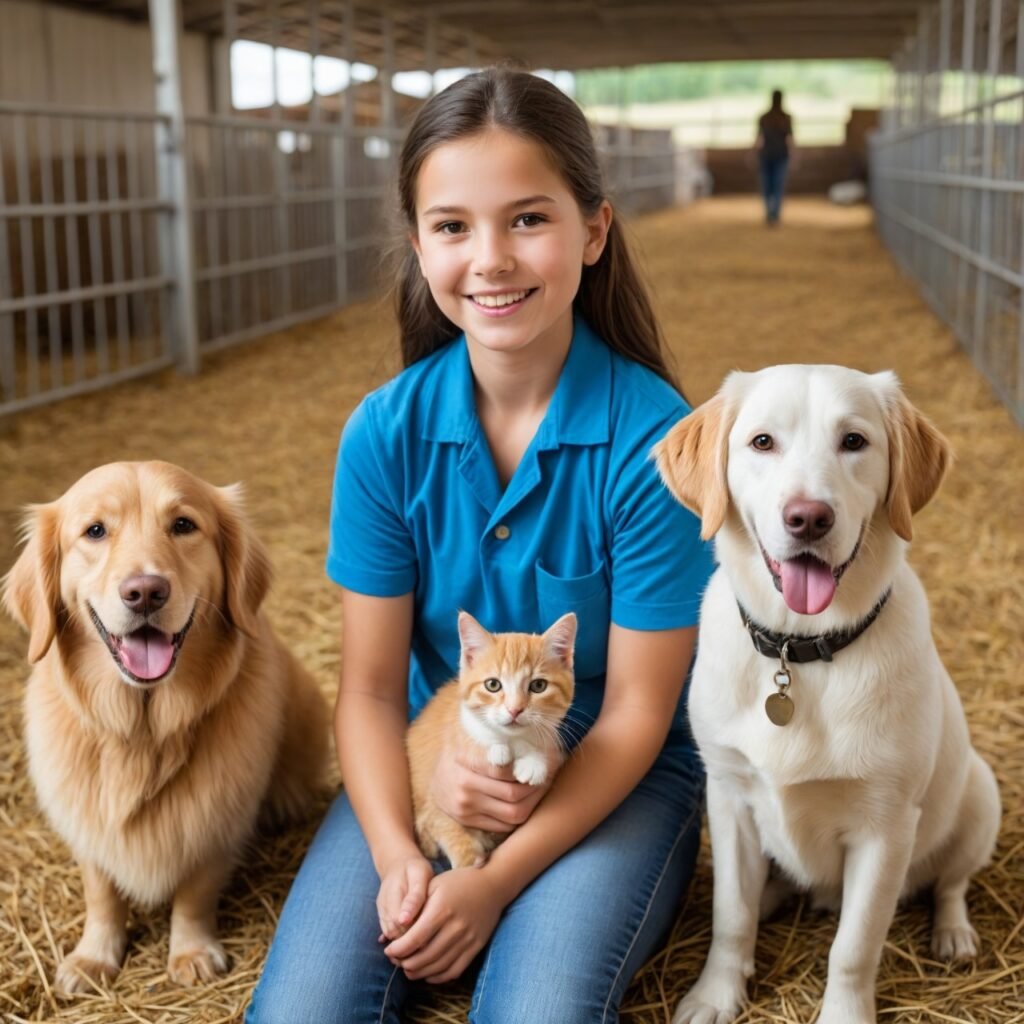
Pingback: Here The Ultimate Guide for Awesome Pet Toys to Gift for Extra Health and Happiness